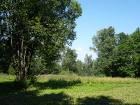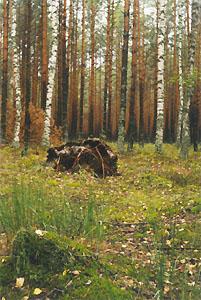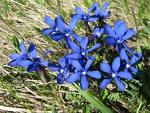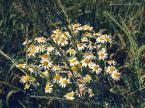
RUSSIAN FEDERATION
Land
In both total area and geographic extent Russia is the largest country in the world. With an area of 17,075,400 sq km (6,592,800 sq mi), Russia constitutes more than one-ninth of the world’s land area. From north to south Russia extends more than 4,000 km (2,400 mi) from Arctic islands in the Barents Sea to the southern border along the Caucasus Mountains. From the coast of the Baltic Sea to Big Diomede Island (Ratmanov Island) in the Bering Strait, Russia’s maximum east-west extent is almost 10,000 km (6,200 mi), a distance encompassing 11 time zones and spanning nearly half the circumference of the Earth. Russia stretches across parts of two continents, Europe and Asia, with the Ural Mountains and Ural River marking the boundary between them.
Water Resources
RiversRussia’s longest rivers are all located in Siberia. The Ob’ and Irtysh rivers form Russia’s largest river system. The Amur and its headwaters, the Onon and the Shilka, form Russia’s second longest system, with a total length of 4,416 km (2,744 mi).
Among individual rivers, the Lena River is longest; it flows through Siberia to the Arctic Ocean from its source near Lake Baikal. The next longest individual rivers are the Irtysh and the Ob’. The Volga River, located in European Russia, is the country’s fourth longest river and the longest river in Europe. The fifth longest river, the Yenisey, flows north from Mongolia through central Siberia to the Arctic Ocean. The Yenisey River carries more water than any other stream system in the country.
Groundwater resources
The renewable groundwater resources are estimated at 788 km3/year. This figure, however, does not include resources in the form of inland ice, glaciers, and pergelisol (permafrost). For the regions of western and eastern Siberia alone, the quantity of ice of the Arctic islands is estimated at 5,000 km3 and that of the mountain glaciers at 170 km3. The resources in the form of pergelisol are even larger. The overlap between surface water and groundwater resources has been estimated at 512 km3/year.
Lakes and Dams
There are about two million fresh- and saltwater lakes in the Russian Federation. The largest saltwater lake is the Caspian Sea. The largest freshwater lake is Lake Baikal, located entirely within the Russian Federation in the southeast of eastern Siberia. Dams have been constructed on most large rivers in the Russian Federation, mainly for electrical energy production, but also for irrigation. There are 330 large reservoirs in use at present and about 3,000 medium-sized reservoirs.
Plants and Animals
Russia’s forests, located mostly in Siberia, cover more than two-fifths of the country’s total territory, and account for nearly one-fourth of the world’s total forested area. The forest zone has two distinct areas: a large, mainly coniferous forest, or taiga, lies in the north, and a much smaller area of mixed forest lies in the south. The taiga occupies two-fifths of European Russia and extends across the Urals to cover much of Siberia. A mixed forest, containing both coniferous and broad-leaved deciduous trees, occupies the central portion of the Great European Plain between Saint Petersburg and the Ukrainian border.
Animals are abundant and varied throughout Russia. The tundra is home to polar bears, seals, walruses, arctic foxes, lemmings, reindeer, and arctic hares. Birdlife includes white partridges, snowy owls, gulls, and loons. Geese, swans, and ducks migrate into the region during summer, a time when huge swarms of mosquitoes, gnats, and other insects emerge. South of the tundra, the taiga is a habitat for moose, brown bears, lynx, sables, and a variety of forest birds, including owls and nightingales. The broad-leaved forests of the Great European and West Siberian plains contain boars, deer, wolves, foxes, and minks. There are also a variety of birds, snakes, lizards, and tortoises.
Natural Resources
Russia contains the greatest reserves of mineral resources of any country in the world. Russia is especially rich in mineral fuels. The country may hold as much as one-half of the world’s potential coal reserves and may hold larger reserves of petroleum than any other nation. Russia is also well endowed with most of the nonferrous metals: aluminum, copper, lead, zinc. The aluminum ores Russia does have are found primarily in the Urals, northwestern European Russia, and south central Siberia. Raw materials for the manufacture of chemicals are also abundant. These include potassium and magnesium salt deposits in the Kama River district of the western Urals. Some of the world’s largest deposits of apatite (a mineral from which phosphate is derived) are in the central Kola Peninsula; other types of phosphate ores are found in other parts of the country. Common rock salt is found in the southwestern Urals and southwest of Lake Baikal. Surface deposits of salt are derived from salt lakes along the lower Volga Valley. Sulfur is found in the Urals and the middle Volga Valley. High-grade limestone, used for the production of cement, is found in many parts of the country, but particularly near Belgorod near the border with Ukraine, and in the Zhiguli Hills area of the middle Volga Valley.








© 2009 CaspEcoProject Management and Coordination Unit
7-th floor, Kazhydromet Building, Orynbor st., Astana, 010000, Republic of Kazakhstan,
Tel. No.: (+7 7172) 798317; 798318; 798320, 798307| E-Mail: MSGP.MEG@undp.org